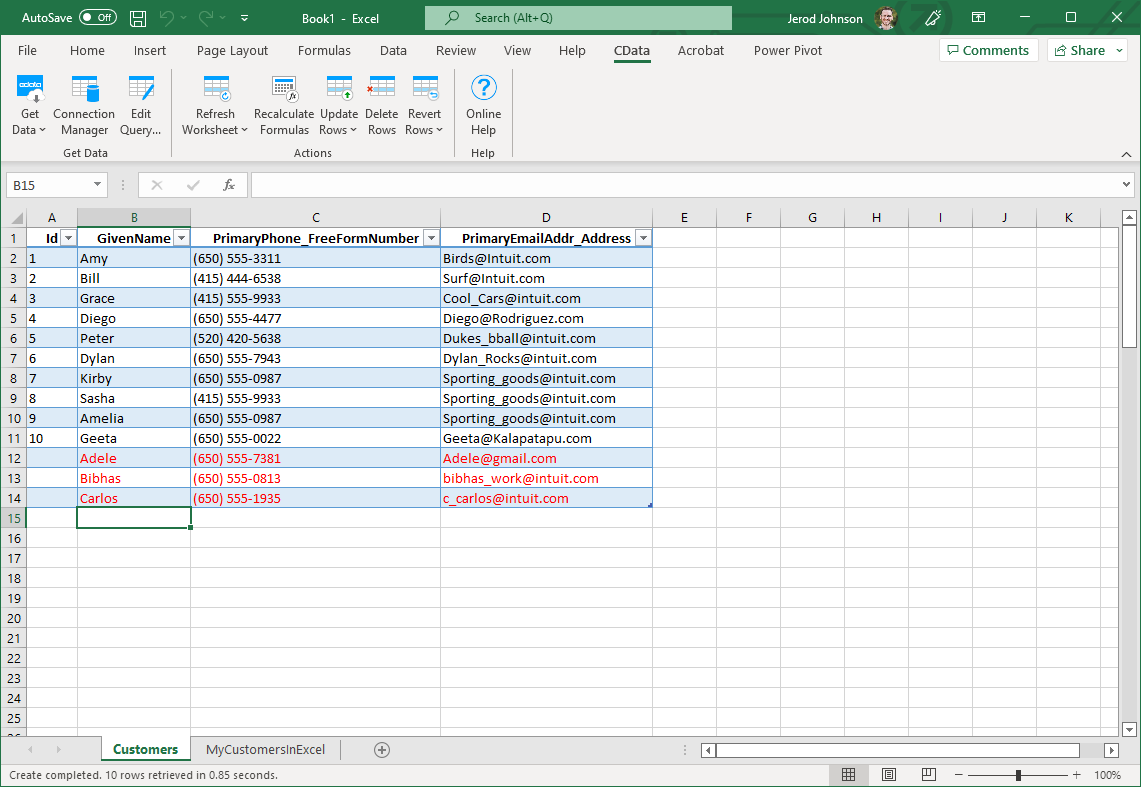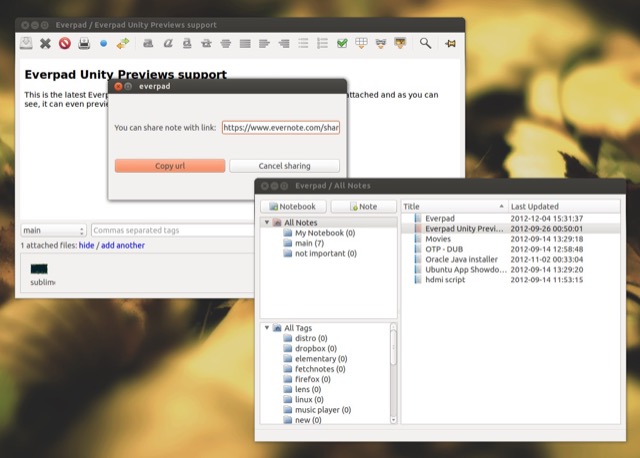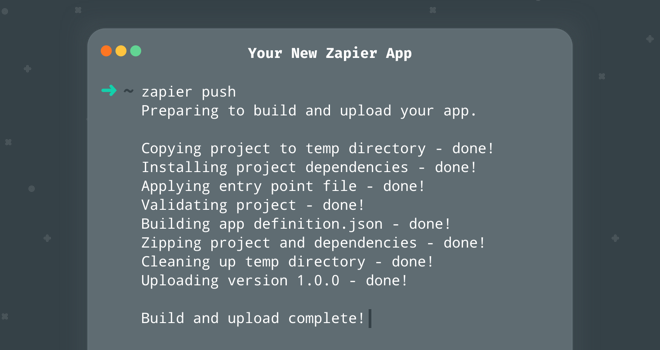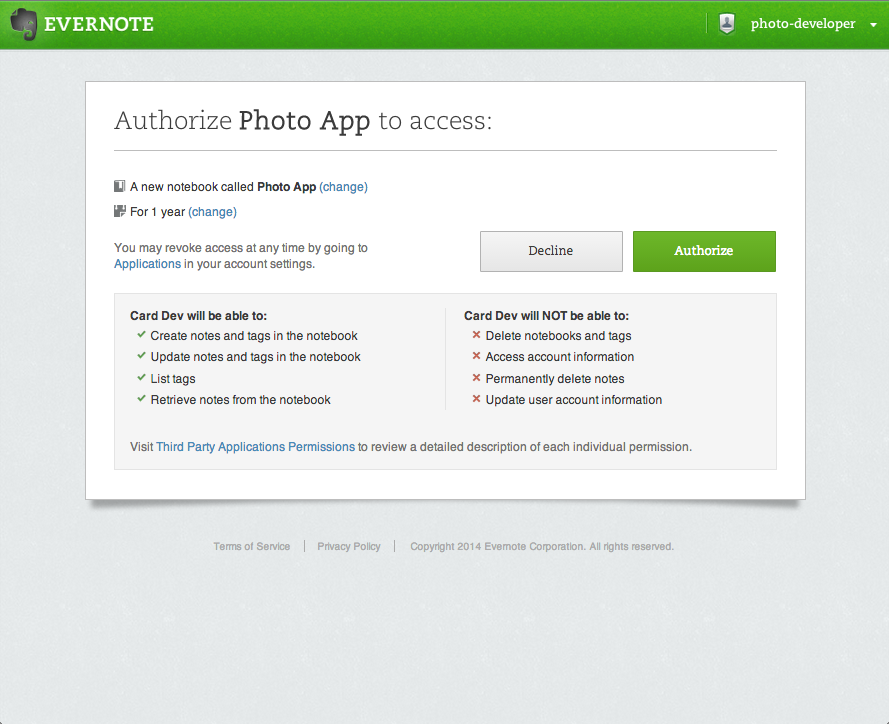The Evernote SDK for Python Quick-start Guide
- Evernote Api Python Code
- Graph Api Python
- Microsoft Graph Api Python
- Evernote Api Python Download
- Evernote Api Python Tutorial
The purpose of this guide is describing how to download, install, and configure the Evernote SDK for Python, as well as demonstrate how it’s used. If everything goes as planned, this shouldn’t take more than 10 minutes to complete.
- An account on https://sandbox.evernote.com, Evernote’s development server. You’ll be connecting to this server while your application is in development.
- An Evernote API key, which consists of two values: a consumer key and a consumer secret. If you don’t have an API key yet, you can get one here.
The Evernote SDK for Python, as well as all other Evernote SDKs, is hosted on GitHub. You can download the SDK as a zip file by clicking the download link at the top of the page. After extracting the archive, run the python setup script to install the library on your system (this will likely require administrative privileges):
python setup.py installThis script will install the SDK (along with any dependent modules it needs to run) and place everything in a directory Python knows about so you won’t have to mess with
PYTHONPATHbefore using it.Alternately, If you’re using git to manage your project, you can instead install the Evernote SDK for Python as a git submodule by issuing the following commands:
You can then issue
git submodule updatewhenever a new version of the SDK is released, and the changes will be automatically added to your copy of the SDK. Don’t forget to run thesetup.pyscript after downloading or updating.Finally, the Evernote SDK for Python is available via the Python Package Index and can be installed using the
pipcommand:pip install evernoteAfter completing the installation instructions above, you should now be able to include the Evernote SDK for Python in your project. To test this, run this command at the console to verify that the Evernote classes import without error:
$ python -c 'from evernote.api.client import EvernoteClient'If that runs and quietly exits, you’re ready to go.
Interacting with the Evernote Cloud API requires an authentication token.
When your application is in development, you can use a Developer Token. This token behaves exactly like an authentication token retrieved using OAuth, but can be downloaded directly from Sandbox, our development server. This allows the developer to begin integrating with the Evernote Cloud API quickly without first needing to implement the entire OAuth flow:
Once your application is ready for production, users will need to authenticate with Evernote using OAuth. We strongly recommend using developer tokens during the early stages of development.
If you’re using Pyramid or Django, definitely check out the sample applications the came with the SDK you downloaded — these samples demonstrate how to build OAuth authentication to Evernote into your application.
UserStoreis an object used to retrieve information about the current user. To create an instance ofUserStore, call theget_user_storemethod fromEvernoteClient:Note: most of the Evernote API documentation indicates that an authorization token parameter is required for almost all API functions. When you initialize your instance of
EvernoteClientwith a valid authorization token, this parameter should be omitted in other API calls.NoteStoreis used to create, update and delete notes, notebooks and other Evernote data found in a user’s account. Just like withUserStore, creating an instance ofNoteStoreis as easy as callingEvernoteClient.get_note_store:Next, let’s talk about some of the common data types you’re likely to find when exploring the Evernote Cloud API:
Types.Noterepresents a single note in a user’s account.Types.Notebookrepresents a notebook in a user’s account.- A
Types.Resourceinstance describes a file (image, PDF or any other type of file) attached to a note. Read more about working with Resource objects here. - Notes can have one or more related instances of
Types.Tagattached to them; these are short, textual labels that aid the user in organizing their information within Evernote.
There are other types you’ll be using as you build your integration; if you haven’t already, it might be worth taking a few minutes to go over the API Specification after you finish with this.
Once you’ve got your application successfully authenticating with Evernote, we can go through a few quick examples of tasks common to most Evernote partners:
Creating a note
Creating a new Evernote note is as simple as creating a new instance of
Types.Note, adding a title and content and callingNoteStore.createNote:This will create the note in the user’s default notebook. If you want to specify a destination notebook, you’ll need assign the notebook’s GUID to
note.notebookGuidbefore callingcreateNote.There are, of course, plenty of other attributes within
Types.Notethat you can adjust, but that’s the simplest form of the note creation process.Creating a notebook
Notebooks are just as simple to create as notes: make a new
Types.Notebookobject, give it a name, and callNoteStore.createNotebook:This will create a new notebook called “My Notebook”.
Now that you’ve got the basics down, it would be a good idea to head over to our documentation page and check out how to perform the various tasks common to developers working with the Evernote API. And, as always, feel free to get in touch if you need any assistance.
Nowadays, Python is one of the most popular and accessible programming languages In 2019 it was ranked third in the TIOBE rating.
- 加上与 Evernote API 紧密结合的 IFTTT, Workflow 等工具,打拼多年的 Evernote 做的还是很不错的。但是一旦涉及到裁剪编辑复杂格式的网页,代码、LaTeX 等稍复杂的格式需求,受限于 ENML,Evernote 就变得力不从心。 自己的需求.
- ODBC interfaces are accessible from every major development technology including Python and more. Enterprise-Class Design Built with the same reliability, scalability, performance & security powering leading data integration solutions.

How to install evernote
- Download and install ActivePython
- Open Command Prompt
- Type
pypm install evernote
| Python 2.7 | Python 3.2 | Python 3.3 | ||||||||||||||
|---|---|---|---|---|---|---|---|---|---|---|---|---|---|---|---|---|
| Windows (32-bit) |
| |||||||||||||||
| Windows (64-bit) |
| |||||||||||||||
| Mac OS X (10.5+) |
| |||||||||||||||
| Linux (32-bit) |
| |||||||||||||||
| Linux (64-bit) |
|
Evernote Api Python Code

Links
Author
License
Dependencies
Depended by
Imports
Lastest release
Evernote API version 1.25
Overview
This SDK contains wrapper code used to call the Evernote Cloud API from Python.

The SDK also contains a sample script. The code demonstrates the basic use of the SDK for single-user scripts. Real web applications must use OAuth to authenticate to the Evernote service.
Prerequisites
In order to use the code in this SDK, you need to obtain an API key from http://dev.evernote.com/documentation/cloud. You'll also find full API documentation on that page.
In order to run the sample code, you need a user account on the sandbox service where you will do your development. Sign up for an account at https://sandbox.evernote.com/Registration.action
In order to run the client client sample code, you need a developer token. Get one at https://sandbox.evernote.com/api/DeveloperToken.action
Getting Started - Client
The code in sample/client/EDAMTest.py demonstrates the basics of using the Evernote API, using developer tokens to simplify the authentication process while you're learning.
Open sample/client/EDAMTest.py
Scroll down and fill in your Evernote developer token.
On the command line, run the following command to execute the script:
`bash$ export PYTHONPATH=../../lib; python EDAMTest.py`
Getting Started - Django with OAuth
Web applications must use OAuth to authenticate to the Evernote service. The code in sample/django contains a simple web apps that demonstrate the OAuth authentication process. The application use the Django framework. You don't need to use Django for your application, but you'll need it to run the sample code.
Install django, oauth2 and evernote library. You can also use requirements.txt for pip.
Open the file oauth/views.py
Fill in your Evernote API consumer key and secret.
On the command line, run the following command to start the sample app:
`bash$ python manage.py runserver`
Open the sample app in your browser: http://localhost:8000
Getting Started - Pyramid with OAuth
Graph Api Python
If you want to use Evernote API with Pyramid, the code in sample/pyramid will be good start.
Install the sample project using pip on your command line like this.
`bash$ pip install -e .`
Open the file development.ini
Fill in your Evernote API consumer key and secret.
On the command line, run the following command to start the sample app:
`bash$ pserve development.ini`
Open the sample app in your browser: http://localhost:6543
Usage
### OAuth ###```pythonclient = EvernoteClient(
System Message: WARNING/2 (<string>, line 70); backlink
Inline literal start-string without end-string.System Message: WARNING/2 (<string>, line 70); backlink
Inline interpreted text or phrase reference start-string without end-string.System Message: ERROR/3 (<string>, line 73)
Unexpected indentation.consumer_key='YOUR CONSUMER KEY',consumer_secret='YOUR CONSUMER SECRET',sandbox=True # Default: True
System Message: WARNING/2 (<string>, line 76)
Block quote ends without a blank line; unexpected unindent.
)request_token = client.get_request_token('YOUR CALLBACK URL')client.get_authorize_url(request_token)
System Message: ERROR/3 (<string>, line 79)
Unexpected indentation.Microsoft Graph Api Python
=> https://sandbox.evernote.com/OAuth.action?oauth_token=OAUTH_TOKEN
Evernote Api Python Download
System Message: WARNING/2 (<string>, line 80)
Block quote ends without a blank line; unexpected unindent.Evernote Api Python Tutorial
```To obtain the access token```pythonaccess_token = client.get_access_token(
System Message: WARNING/2 (<string>, line 80); backlink
Inline literal start-string without end-string.System Message: WARNING/2 (<string>, line 80); backlink
Inline literal start-string without end-string.System Message: WARNING/2 (<string>, line 80); backlink
Inline interpreted text or phrase reference start-string without end-string.System Message: ERROR/3 (<string>, line 84)
Unexpected indentation.request_token['oauth_token'],request_token['oauth_token_secret'],request.GET.get('oauth_verifier', ')

System Message: WARNING/2 (<string>, line 87)
Block quote ends without a blank line; unexpected unindent.)
Now you can make other API calls`pythonclient = EvernoteClient(token=access_token)note_store = client.get_note_store()notebooks = note_store.listNotebooks()`
### UserStore ###Once you acquire token, you can use UserStore. For example, if you want to call UserStore.getUser:`pythonclient = EvernoteClient(token=access_token)user_store = client.get_user_store()user_store.getUser()`You can omit authenticationToken in the arguments of UserStore functions.
### NoteStore ###If you want to call NoteStore.listNotebooks:`pythonnote_store = client.get_note_store()note_store.listNotebooks()`
### NoteStore for linked notebooks ###If you want to get tags for linked notebooks:`pythonlinked_notebook = note_store.listLinkedNotebooks()[0]shared_note_store = client.getSharedNoteStore(linked_notebook)shared_notebook = shared_note_store.getSharedNotebookByAuth()shared_note_store.listTagsByNotebook(shared_notebook.notebookGuid)`
### NoteStore for Business ###If you want to get the list of notebooks in your business account:`pythonbusiness_note_store = client.get_business_note_store()business_note_store.listNotebooks()`
### References ###- Evernote Developers: http://dev.evernote.com/- API Document: http://dev.evernote.com/documentation/reference/
